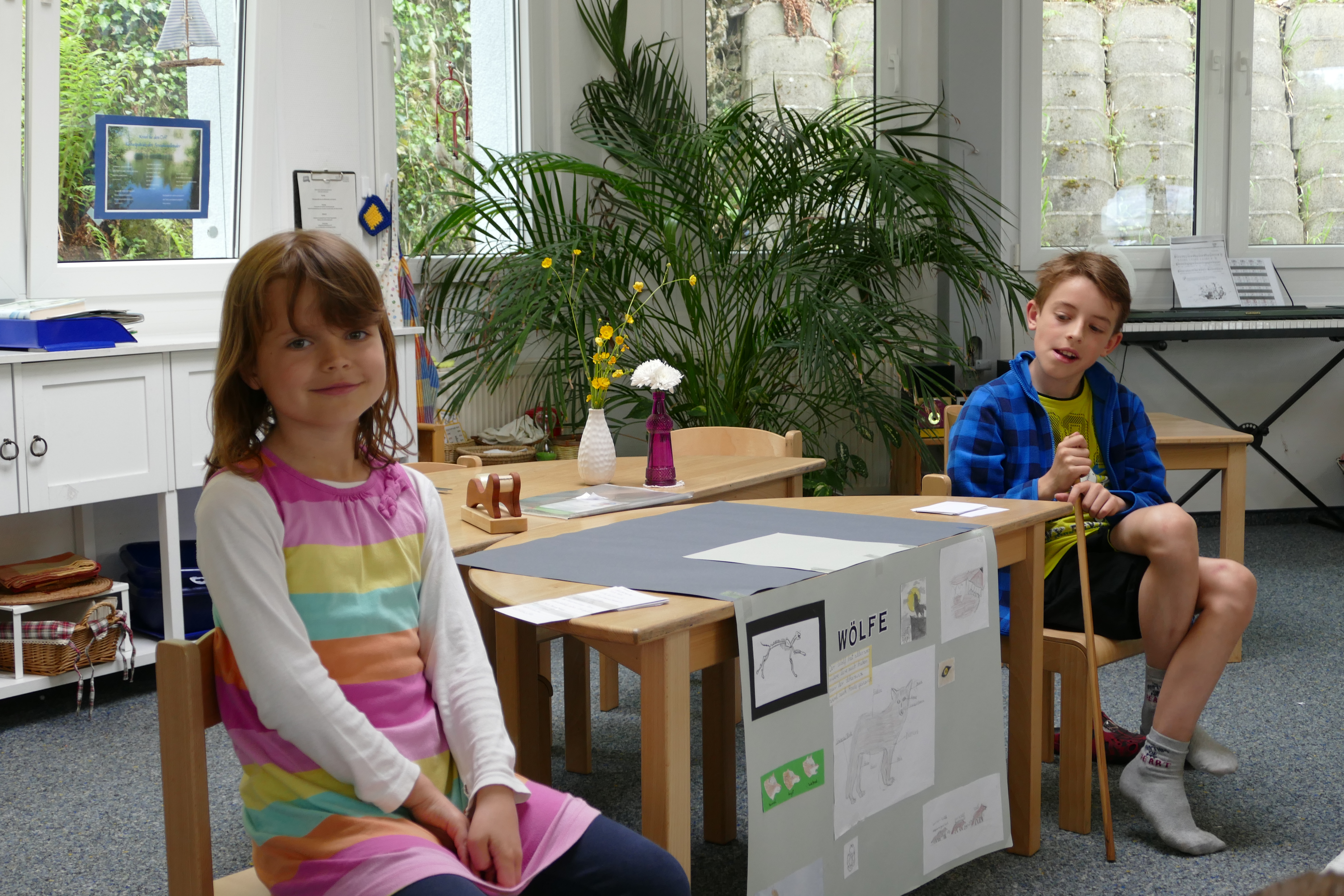The 2nd stage of development
The second stage of development covers the ages from 6 to 12, roughly corresponding to grades 1 to 6. Almost all over the world - with the exception of Germany and Austria - primary schools or elementary schools are geared to this stage. This is no coincidence, as it is the period of childhood until the onset of puberty.
Physical changes
Around the age of 6, obvious physical changes initiate this stage of development: The milk teeth fall out, the children grow, legs and arms become longer and the last remnants of baby fat disappear. It is a robust and stable phase: most childhood illnesses have been overcome and the crises of puberty are still a long way off. The six- to twelve-year-old children are usually bursting with strength and energy and often enjoy taking on physical challenges.
Intellectual hunger
However, children are also extremely capable on a cognitive level and Montessori concluded that "nature provides this period for the acquisition of education[1]". Driven by endless curiosity and the desire to understand the cause and effect of things, Montessori coined the image of a fertile field waiting for the seed to be sown so that it can germinate into education. The child's thirst for knowledge is infinitely great at this age and he is not satisfied with being served knowledge in bite-sized morsels, let alone learning it by heart; rather, he wants to explore the whole universe and understand connections. On the basis of concrete experiences - which it has had in the children's house, among other places - it therefore increasingly moves into the realm of abstract concepts and logical thinking.
Imagination
In this phase, the child is equipped with a very special gift - the power of imagination - which allows it to explore far beyond concrete, sensory experiences. But in all learning processes, it is their own activity that leads them to knowledge - not the long explanations of the educators! The "Help me to do it myself" now becomes "Help me to think for myself!"
Exploring social structures
If during the first phase of development the child was busy forming all the functions of its personality, its interest is now directed towards its development into a social being. It expands its radius of action, and contacts with its friends become increasingly important. Slowly it develops the need to detach itself from its family - which does not mean, however, that it loves its family less. Rather, it forms organised groups with his friends in which different roles are taken on and tried out - the leader, the helper, the watchdog, the follower, the referee... In a protected setting, the child tries out in this way how our society is structured and functions. In later life, it will always be able to draw on the knowledge it gains through such interactions in this phase of its life. On the emotional level, the child is increasingly able to empathise with the feelings of others and accept constructive criticism.
Moral development
Closely related to the social is his moral development. The six-year-old child develops a great sensitivity for justice. If at the beginning "equal rights for all" is still considered just, with time it understands that it can be quite just to make differences. Furthermore, the child asks questions about good and evil and forms its own judgements about them. This is one of the reasons why children in this phase tend to snitch more often: They are searching for the "right" or "wrong" in order to adjust their behaviour accordingly.
Montessori observed all these changes in children between the ages of 6 and 12 and adapted the content and her method to these changing needs of school children: She designed a Curriculum and a prepared environment for the second stage of development.



